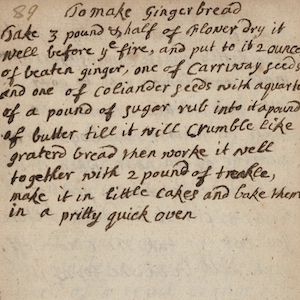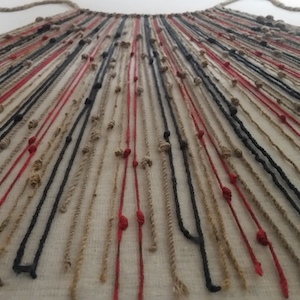Early Modern (1450 CE - 1800 CE)

Ginger bread recipe
This late-seventeenth century recipe for gingerbread shows how colonization in the Atlantic world changed what men and women in England would have eaten. The recipe includes ginger and sugar.

A Colony in Crisis: The Saint Domingue Grain Shortage of 1789
...the site’s method of limiting each translated entry to about 1000 words is a great way to foster greater engagement with these sources without being too much to handle at once.
Long Teaching Module: Inca Society
In South America in the centuries before 1500, the Peruvian coast and Andean highlands were home to a series of cultures that cultivated cotton as well as food crops. Of these, the largest empire was created by the Incas, who began as a small militaristic group and conquered surrounding groups.

Illustrations from Guaman Poma, El Primer Nueva Coránica y Buen Gobierno
These two illustrations come from El Primer Nueva Coránica y Buen Gobierno [The First New Chronicle and Good Government] (1615), a history of the Inca Empire and the Spanish conquest of the Andes written and illustrated by Filipe Guaman Poma y Ayala, an indigenous Peruvian Christian noble.

Extract from Garcilaso de la Vega, Royal Commentaries of the Incas and General History of Peru
This is an extract from the chronicles of Garcilaso de la Vega (1539–1616), the son of a Spanish conquistador and an Inca noble woman, who grew up in Peru but left there as a young man and spent the rest of his life in Spain.

Extract from Garcilaso de la Vega, Royal Commentaries of the Incas and General History of Peru
This is an extract from the chronicles of Garcilaso de la Vega (1539–1616), the son of a Spanish conquistador and an Inca noble woman, who grew up in Peru but left there as a young man and spent the rest of his life in Spain.

Extract from Garcilaso de la Vega, Royal Commentaries of the Incas and General History of Peru
This is an extract from the chronicles of Garcilaso de la Vega (1539–1616), the son of a Spanish conquistador and an Inca noble woman, who grew up in Peru but left there as a young man and spent the rest of his life in Spain.

Pedro de Cieza de León, Crónicas
This is an extract from the chronicles of Pedro de Cieza de León (1520–1554), a Spanish soldier and writer who compiled a history of Peru during his seventeen years there.

Report from the General Inspection of the Chupaychu
This is a report from a Spanish inspector dating from 1549, written by a European scribe, based on an Andean’s reading of a khipu, the collections of cords on which Incas recorded information.

Inca Khipu
Andean peoples, including the Incas, recorded information on khipus (also spelled quipu), collections of colored and knotted cords such as this one.